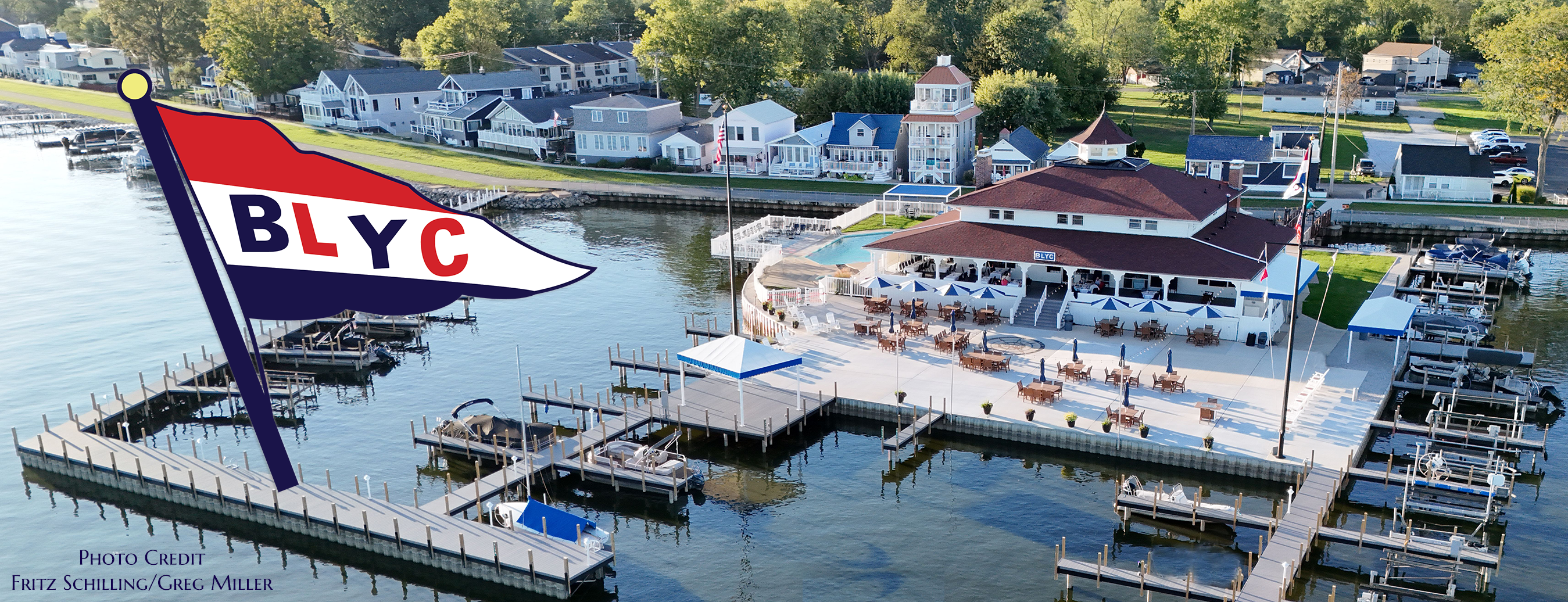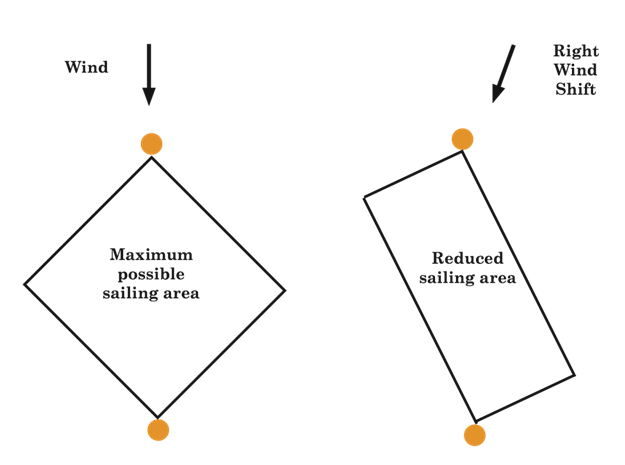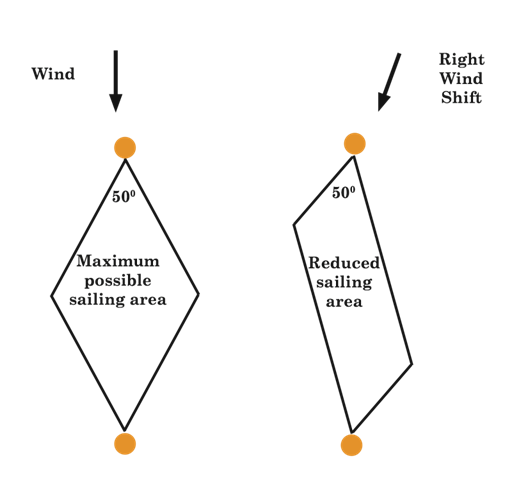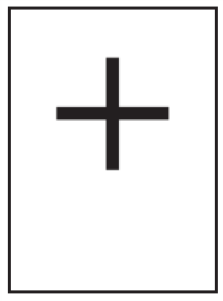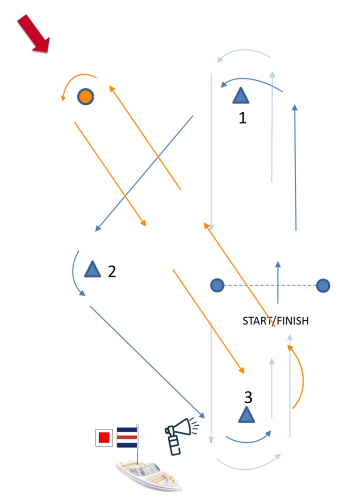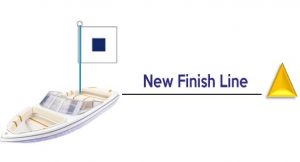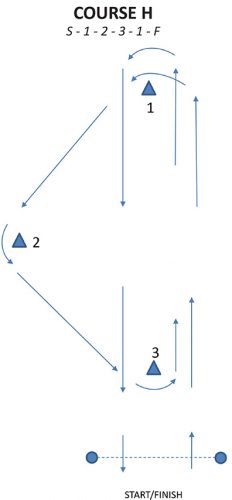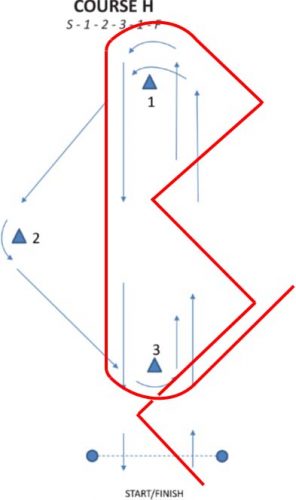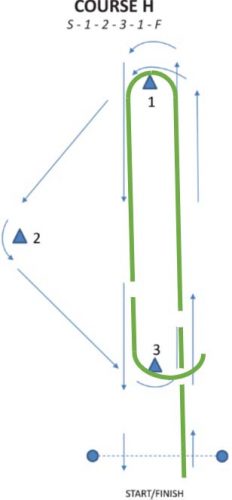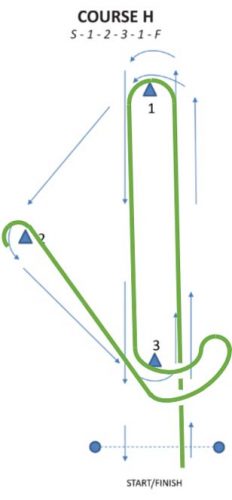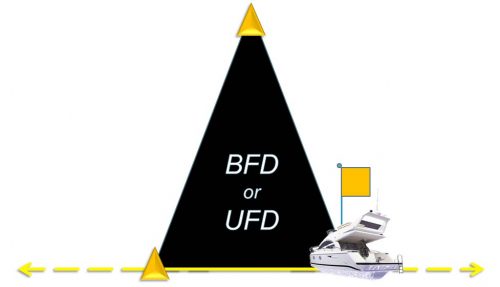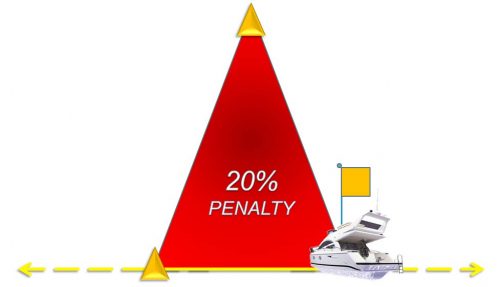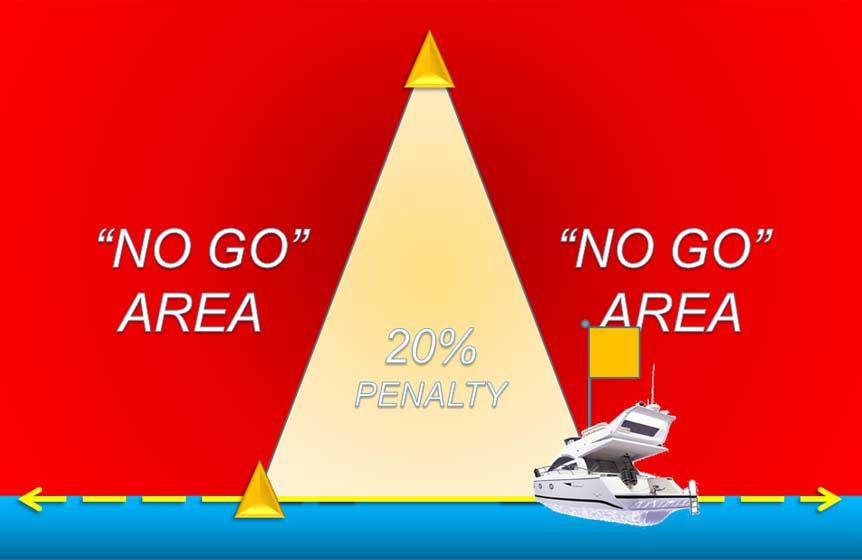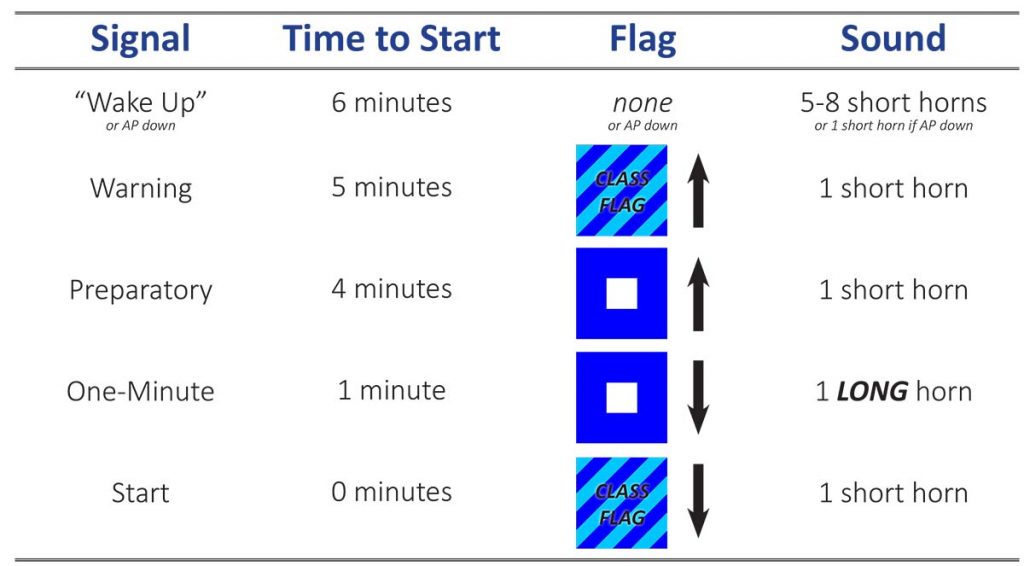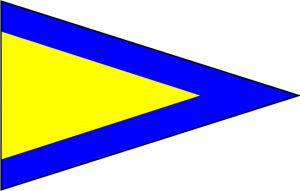Often, we focus our rules discussions only on Part 2 of the rules – “When Boats Meet.” This winter, I plan to explore the rules of Part 3 – “Conduct of a Race.” They may appear to only matter to the Race Committee, but they have significant importance to the racing sailor too.
– Steve Harris, US Sailing National Race Officer
Rules 27 & 31...
This is more of a “grab bag” of other rules in Part 3. Each of their own importance, but not necessarily long enough for their own post. They have consequences for racing sailors but, generally, don’t require a long discussion.
Rule 27 - Other Race Committee Actions Before the Starting Signal
27.1 – “No later than the warning signal, the race committee shall signal or otherwise designate the course to be sailed if the sailing instructions have not stated the course, and it may replace one course signal with another and signal that wearing personal flotation devices is required (display flag Y with one sound).”
27.2 – “No later than the preparatory signal, the race committee may move a starting mark.”
27.3 – “Before the starting signal, the race committee may for any reason postpone (display flag AP, AP over H, or AP over A, with two sounds) or abandon the race (display flag N over H, or N over A, with three sounds)”
What’s this rule saying?
Simply put, these are directives to the race committee. These are both things that they must do, and items that they can do.
27.1 – “No later than the warning signal, the race committee shall signal or otherwise designate the course to be sailed if the sailing instructions have not stated the course, and it may replace one course signal with another and signal that wearing personal flotation devices is required (display flag Y with one sound).”
This part of the rule contains a number of points…
- The first is proscriptive… “the race committee shall signal or otherwise designate the course…”
- This is probably common sense – different courses may require different strategies in how you would sail them. During the starting sequence, there’s too much going on to have to look for another signal.
- The second part, most sailors (and race officers, for that matter) find confusing. What is a “course signal?” Certainly, the race committee cannot change the descriptions of the marks or other items described in the sailing instructions on the water – there is a very specific protocol for doing that.
- a “course signal” (although not defined in the RRS) is a signal that says what course is to be sailed. In other words…
- In a multi-fleet regatta with multiple starts, the RC can start one fleet on one course and then “no later than the warning signal” designate a different course for the next fleet.
- It also allows the race committee to change their mind. Perhaps they initially decided on a particular course but, for a variety of possible reasons – several general recalls, a long postponement, a change in conditions, etc. – they decide instead to start the fleet on a different course. They have that flexibility so long as it is signaled “no later than the warning signal.“
- a “course signal” (although not defined in the RRS) is a signal that says what course is to be sailed. In other words…
- The final part is pretty straightforward. It simply provides a time by which Rule 40 can be invoked. Rule 40 is the rule requiring competitors to wear personal floatation devices. It makes sense that this signal needs to be given with ample time for the competitors to comply.
27.2 – “No later than the preparatory signal, the race committee may move a starting mark.”
This rule simply prescribes a time by which the starting marks must be in place. Obviously, boats cannot start, or set up their start, without knowing the location of the line. Why the Preparatory Signal (4 min. pre-start)? I’m not sure there’s a great answer other than perhaps this…. Especially in varying wind conditions, the RC needs the capability to quickly set the line and go immediately into sequence to get a fair start off. By making this time at the preparatory signal, they can do so and reliably know that the mark will have settled into place in its final location by the required time.
27.3 – “Before the starting signal, the race committee may for any reason postpone (display flag AP, AP over H, or AP over A, with two sounds) or abandon the race (display flag N over H, or N over A, with three sounds)”
This part of the rule is permissive. I’m sure that at some time in the past there were redress requests that led to this being put into the rulebook , but basically, it makes it clear that the RC has the ability to call off a race, for any reason, before the start. After the start, they can no longer postpone and they can only abandon for reasons allowed under rule 32.
Rule 31 - Touching a Mark
“While racing, a boat shall not touch a starting mark before starting, a mark that begins, bounds or ends the leg of the course on which she is sailing, or a finishing mark after finishing .”
This rule is, for the most part, pretty straightforward. IF the mark is part of the leg on which you are sailing, don’t touch it. This would also include start and finish marks. That’s where it gets kinda hairy…
Before we get into that, however, what does it mean to “touch” a “mark?”
Definition of "Mark"
“An object the sailing instructions require a boat to leave on a specified side, a race committee boat surrounded by navigable water from which the starting or finishing line extends, and an object intentionally attached to the object or vessel. However, an anchor line is not part of the mark.”
This definition may seem a bit lengthy for what we might typically think the definition should be. In particular, what does “an object intentionally attached to the object or vessel” refer to?
Often, race committees will stream a mark off the stern of the committee boat at one end of the start line. This is often called a “limit mark” or “keep away mark.” The intent is to keep boats starting from getting too close to the committee boat and potentially colliding with it. Since such marks are intentionally attached, to the vessel, they are, by rule, part of the mark and you cannot touch it.
But what constitutes “touching” the mark?
In several World Sailing cases, it has been established that “contact with a mark by a boat’s equipment constitutes touching it.” This would include contact by any part of the hull, crew, or equipment – essentially, any contact is contact. The one exception is that the anchor line is not part of the mark. So, for example, your rudder catches the anchor line as you round the windward mark. In reality, we all know that it is then likely that the mark would be pulled over and touch the hull, therefore being contact with the mark. However, if you were able to clear that line before the mark was pulled over and contacted the hull, you would not have violated the rule.
NOW… finishing creates a unique circumstance. Although the definition of mark is the same throughout the race, two more definitions come into play at the finish – finish and racing…
Definition of "Racing"
“A boat is racing from her preparatory signal until she finishes and clears the finishing line and marks…”
Definition of "Finish"
“A boat finishes when any part…crosses the finishing line from the course side. However, she has not finished if after crossing the finish line she… corrects an error in sailing the course…“
If you recall Post #5 in this series – Rule 28; Sailing the Course – I mentioned this situation and that it would require a longer discussion…
Hitting a finish mark presents a unique situation. If we look at the definition of finish, we see that a boat finishes when any part of her hull crosses the finish line from the course side. However, looking at the definition of racing, she has to “clear the finishing line and marks” before she can be considered as no longer racing. In other words, until she has cleared the finishing line and marks, she is still subject to the rules, including Rule 31.
Consider the following situation…

In the diagram above, Boat B has met the definition of finish in that her hull crossed the line from the course side of the line. However, after crossing, she made contact with the finish mark. Since she clearly has not “cleared the finishing line and marks,” she is still racing, is subject to, and has violated Rule 31.
What would the race committee do in this situation?
The proper action of the RC would be to score her finish position – at this point, she has met the definition of finish. However, they may strongly consider protesting her under Rule 31. The RC can’t simply “unfinish” her, a protest would be required.
What should the competitor do?
As she has broken Rule 31, she should do a one-turn penalty and cross the finishing line again from the course side. Under the definition of finish, she has “correct(ed) an error in sailing the course and no longer meets the definition of finish.
At this point, she has met her obligation of making a one-turn penalty and no longer subject to protest. By doing so, she also has met the definition of finish. The RC will record this finish as well. As common practice, when a boat crosses the finishing line multiple times from the course side, good race committees will assign the lower of the scores. If the reason for multiple “finishes” is as described above, they have done it correctly. If there is some other reason, the competitor is sure to submit a scoring inquiry after scores are posted and it can be sorted out then.
